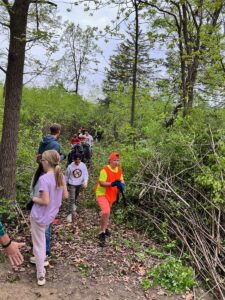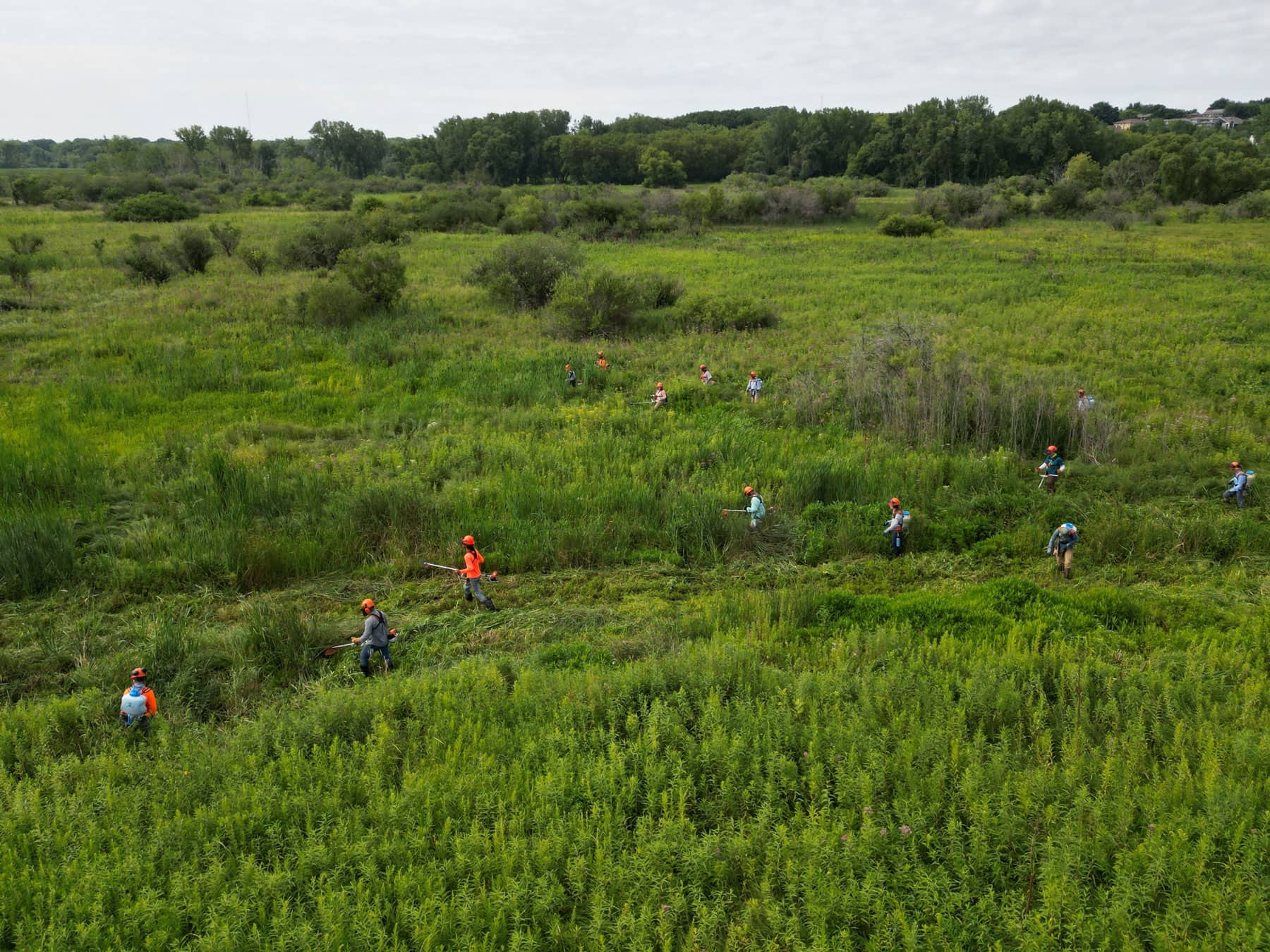Volunteers work to remove invasive species at Pheasant Branch Conservancy
Article by: Hans Hilbert, FOPBC Board Co-President and Restoration & Management Committee Co-Chair
The Friends of Pheasant Branch Conservancy volunteers are diligently working to protect our precious natural area from the harmful impacts of invasive species. These non-native plants and animals can wreak havoc on our ecosystems, outcompeting native species and disrupting delicate ecological balances.
What are invasive species?
Wisconsin law defines invasive species as “nonindigenous species whose introduction causes or is likely to cause economic or environmental harm or harm to human health.” Unfortunately, humans often inadvertently transport these unwanted intruders, allowing them to spread rapidly and widely.
The fight against invasive species at Pheasant Branch Conservancy
Our dedicated volunteers have been working hard along the southeast corridor trail, removing invasive buckthorn and honeysuckle. These aggressive plants form dense thickets, shading out native vegetation and reducing wildlife habitat and food sources. By removing and controlling the regrowth of these invasives we hope to restore a layered ecosystem of groundcover, shrubs, and mature trees. Along the corridor we see little to no hardwood regeneration of species like oak, hickory, serviceberry, and hackberry. Our hope is that providing ground and canopy opening will allow these species to re-establish.
Controlling aquatic invasive species (AIS) in the marsh and wetlands is another major focus of our efforts. Given the sensitivity of wetlands, we often use contractors in these areas. These professional land managers are certified in the work they perform such as the removal of hybrid cattail. These non-native plants form very thick colonies that choke out the more beneficial rushes, sedges, and grasses. Much of our AIS work is funded through a multiyear grant from the Wisconsin Department of Natural Resources.
Why are invasive species such a problem?
Invasive species thrive because they often leave their natural predators and competitors behind. Without these checks and balances, they can reproduce rapidly and dominate their new environment. This can lead to a decline in native plant and animal populations and changes in ecosystem function.
How can you help?
- Learn about invasive species: Familiarize yourself with the types of invasive plants and animals in our area. Most invasive species are introduced through their use in landscaping. When shopping at garden centers, seek out plants that are native to the area.
- Prevent the spread: Be careful not to transport invasive species on your shoes, clothing, or pets. If you visit other natural areas, make sure to clean your boots and clothing before returning to Pheasant Branch Conservancy and vice versa.
- Volunteer: Join the Friends of Pheasant Branch Conservancy in our efforts to control invasive species.

By working together, we can help protect the delicate balance of our natural areas and ensure that Pheasant Branch Conservancy remains a thriving habitat for wildlife.
For more information, please visit:

